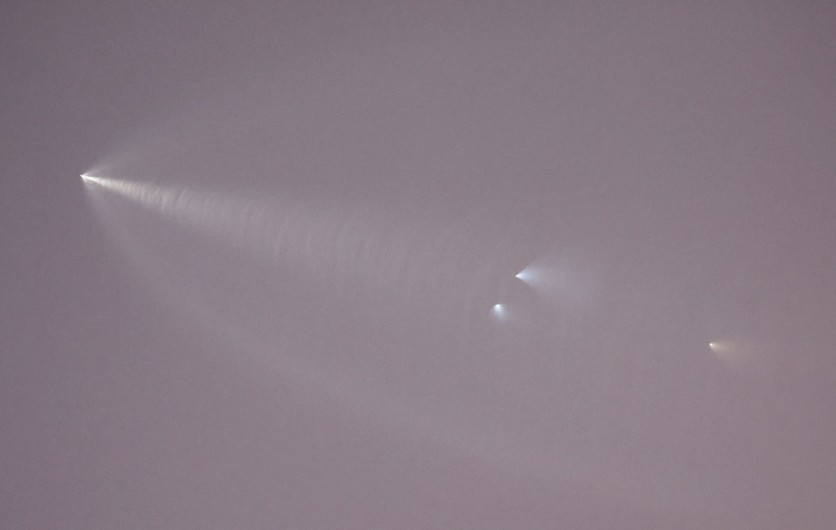SpaceX launched the first of a new generation of Starlink internet satellites into orbit on Monday evening, Feb. 27, as reported first by Space.com.
At 6:13 p.m. EST (2313 GMT), a Falcon 9 rocket carried twenty-one of SpaceX's brand-new Starlink "V2 mini" satellites into orbit from Cape Canaveral Space Force Station in Florida.
The launch was delayed for five hours due to a space weather concern, according to SpaceX's tweet.

Third Launch and Landing
The Falcon 9's first stage landed safely on the SpaceX drone ship A Shortfall of Gravitas, which was positioned in the Atlantic Ocean off the coast of Florida, 8.5 minutes after liftoff. According to representatives of SpaceX, it was the booster's third launch and landing.
The upper stage of the rocket kept accelerating toward low Earth orbit. If all goes as planned, it will launch the 21 Starlink satellites 64.5 minutes after takeoff.
The 21 V2 mini Starlink satellites are a test set made to fit onboard the Falcon 9 rocket. The massive Starship Mars rocket from SpaceX, which is not yet operational, will be used to launch the full-size Starlink V2 spacecraft in batches.
Elon Musk, the founder and CEO of SpaceX, claims that the full-size Starlink V2s are bigger and more powerful than earlier Starlink versions. Each V2 spacecraft will be 1.25 tons (1,130 kilograms) in weight and capable of providing a direct phone connection.
Read Also : Elon Musk: SpaceX Starship to Attempt Orbital Launch in March-What Happened to the Feb Window?
4x More Capacity
According to SpaceX, the V2 minis incorporate crucial technology enabling Starlink to deliver four times more capacity per satellite than earlier iterations, including more potent phased array antennas and using E-band for backhaul.
Argon Hall thrusters, which had never been utilized off Earth before, are also equipped on the V2 minis. The new thrusters outperform first-generation thrusters by 2.4 times the thrust, according to SpaceX.
For internet access worldwide, SpaceX has deployed more than 4,000 Starlink satellites, and there are still more to come.
In fact, the business has received regulatory authority to launch 12,000 Starlink craft, and it has requested permission to launch around 30,000 satellites.
The NASA Crew-6 manned mission, set to launch early on Monday morning, and a second Starlink launch from California's Vandenberg Space Force Base on Monday afternoon were initially planned to launch simultaneously with the new Starlink satellites.
However, Crew-6's scheduled liftoff was canceled because of a ground-system problem late in the countdown. NASA and SpaceX are considering another opportunity to launch on Thursday, Mar. 2.
Related Article : SpaceX and NASA to Launch Crew-6 on Feb. 26-A Minor Delay From Initial Mid-February Target Date

![Apple Watch Series 10 [GPS 42mm]](https://d.techtimes.com/en/full/453899/apple-watch-series-10-gps-42mm.jpg?w=184&h=103&f=9fb3c2ea2db928c663d1d2eadbcb3e52)



